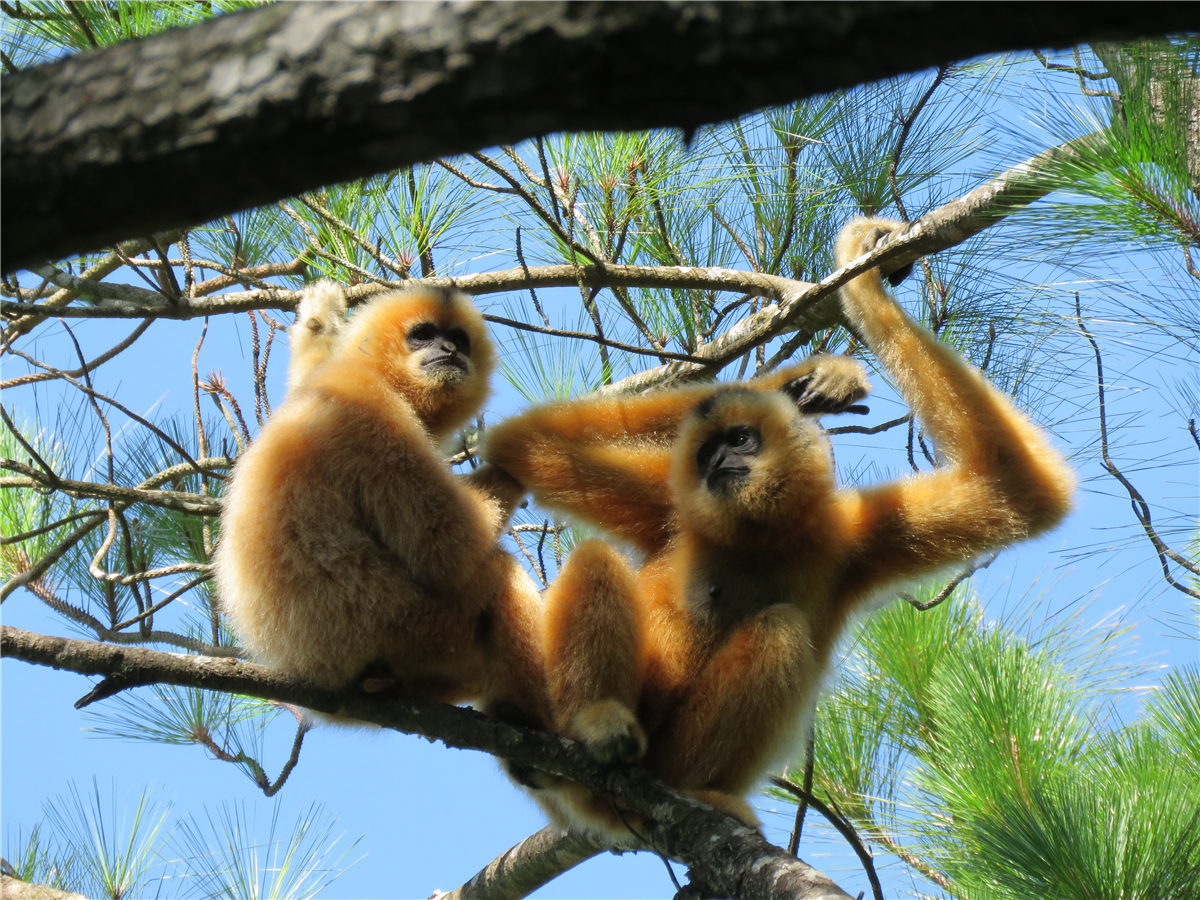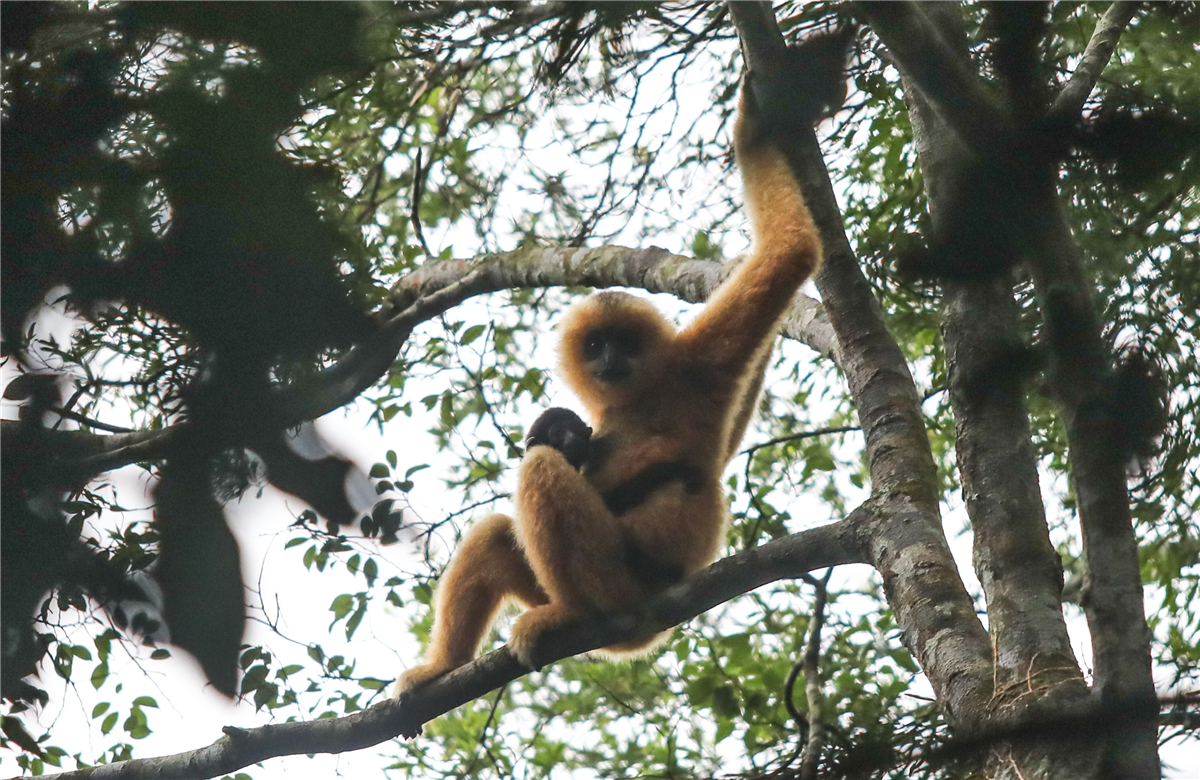Hainan park aims to protect ecology


Hainan province has established a national park research institute, issuing invitations to top experts, especially primatologists worldwide, to work on the province's rainforest and endangered wildlife protection.
The Hainan National Park Research Institute, established on Jan 5, is expected to play a crucial role in protecting rare species including the Hainan gibbon, according to Xia Fei, director of Hainan Rainforest National Park's management office.
The park contains China's biggest rainforest and habitat of the Hainan gibbon, which is listed as critically endangered on the International Union for Conservation of Nature's Red List.
Over the past four decades, the Hainan gibbon has witnessed a slow recovery of its population from seven in the late 1970s to 30 now, according to the park.
"The study of Hainan gibbons is very challenging as they usually spend most of their time on the top of the rainforest about 15 to 20 meters above the ground," Xia said.
Different from monkeys, he said, gibbons do not enjoy intimate contact with humans, although they share more genetic similarities. "That makes observation even harder," Xia said.
"We are calling for corporations with experts worldwide on the management of the national park as well as the wildlife protections. The world's top primatologists are especially welcomed," he said.

According to a report by Hainan Daily, the province's 30 Hainan gibbons belong to five groups. In recent years, some have moved from their original habitat at an altitude of about 1,000 meters above sea level to lower regions.
Jiang Haisheng, a professor from South China Normal University's School of Life Sciences, said that the relocation shows the Hainan gibbon's increasing demands for habitat expansion due to its growing population.
"The rainforest recovery and further study of the species' diets are both in urgent need," he said.
"We should speed up construction of the national park's ecological corridor-a functional zone of passage between several natural zones for a group of species dependent on a single environment."
Jiang said corridors help maintain and recover a certain degree of cohesion in fragmented ecosystems. Through the connection of fragmented habitats, the viability of animal and plant species is improved by enlarging habitats, the dispersion of young animals and the re-use of "empty" habitats.
As one of China's 10 pilot national parks, the Hainan Rainforest National Park, established in April, covers 4,400 square kilometers, accounting for one-seventh of the province's area.
This year, 498 residents from three villages in the park will be relocated and another 1,387 people will be removed in 2021 to protect the environment, according to Xia.
He said several draft plans, including those regarding ecological corridors and park management, have been finished and are now awaiting approval.
Xia said public transportation surrounding the national park is now under construction.
"The strictest protection will be conducted in the core protected area. But we also hope to develop a sustainable way to benefit both local people and the public by scientifically exploring the general protected area, such as eco-friendly tourism or facilities for ecological education," Xia said.
- Tianzhou 8 cargo vessel lifts off toward space station
- Chinese scientists achieve major success in maize harvesting
- Shanghai showcases five years of 'people's city' development
- Guangxi launches inaugural cruise to Vietnam's Halong Bay
- Philadelphia Orchestra bridges ties with Wuxi
- Regulator issues guideline to create a safer online world for minors




































